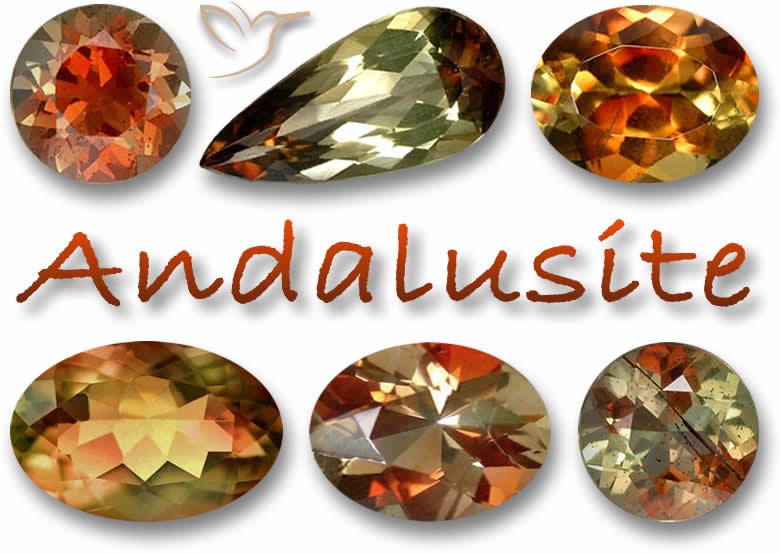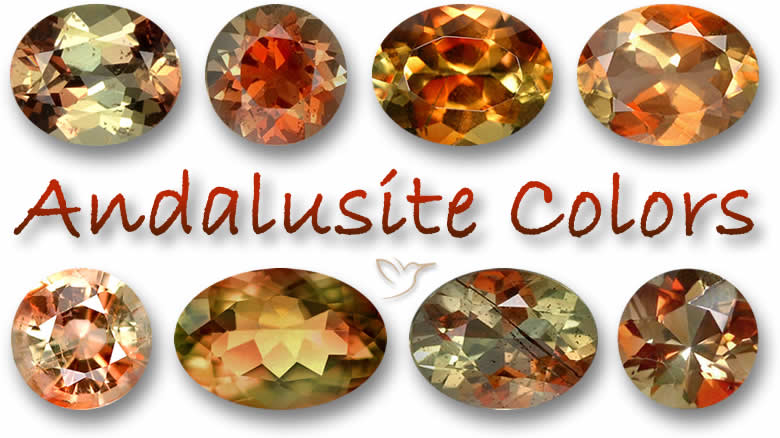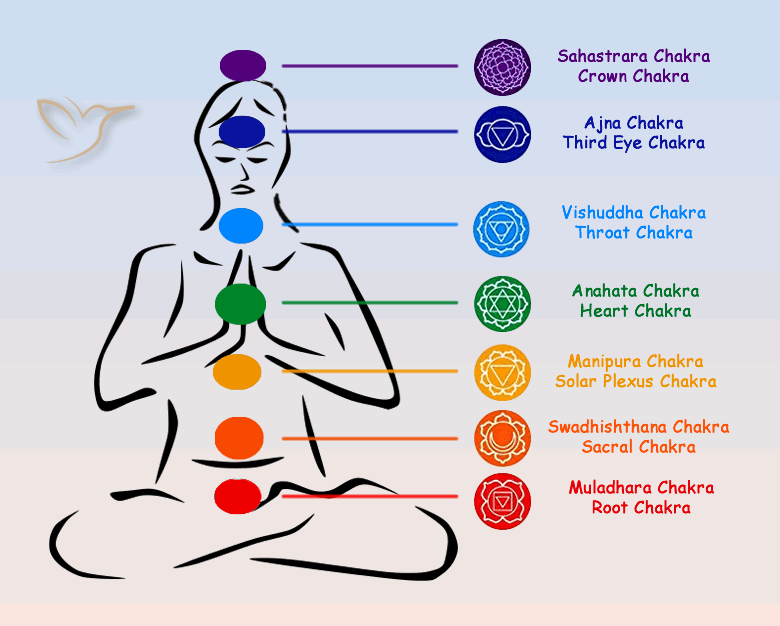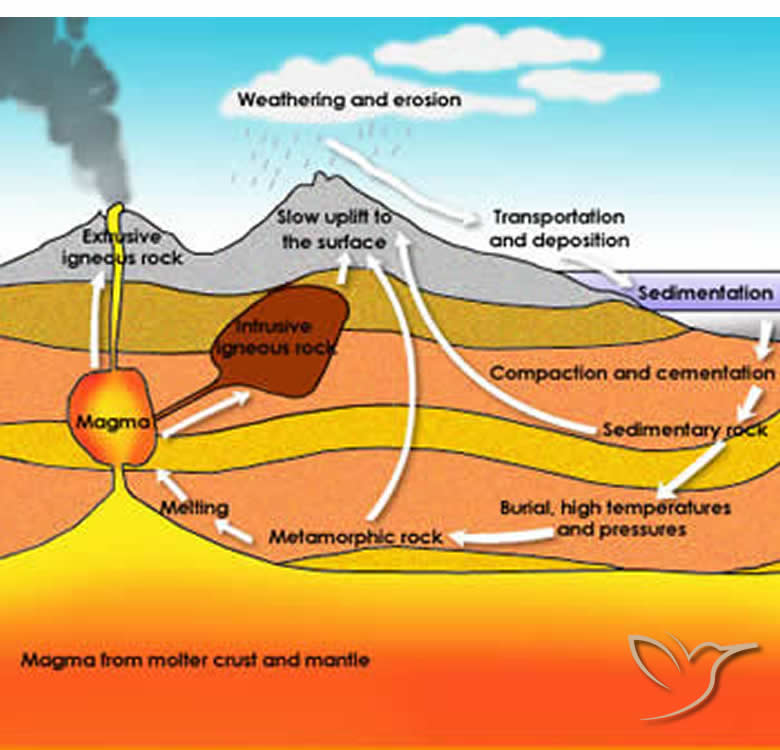What can I find in this article?
- Andalusite Colors
- Andalusite Species
- Andalusite Clarity and Cut
- Spiritual Meaning of Andalusite
- Andalusite and the Chakras
- Health Benefits of Andalusite
- Andalusite Price
- Andalusite Discovery
- Where is Andalusite found?
- How is Andalusite formed?
- Can Andalusite be treated?
- What jewelry is Andalusite suitable for?
- How to care for Andalusite.
- How to tell a real Andalusite
- Can Andalusite change color?
- What is so special about Andalusite?
- Andalusite - Gemological Properties
Andalusite Gemstone Information

Introduction
Andalusite is a little-known gemstone which usually occurs in earthy or fall colors such as orange, yellow, brown, green and gold. It is an attractive gemstone with an unusual play of color where the color switches two or three times as it is turned.
Finding clear Andalusite gemstones is rare and getting them in large sizes is even rarer but their interesting colors, durability and exotic novelty value has seen them being used more and more often by jewelry designers. Their rustic colors have also made them a favorite for men's jewelry pieces with their masculine appeal.
A clear gemstone with olive green turning to amber with a flash of red here and there would make a fine example of this rarely seen gemstone. While large sizes are difficult and expensive to come by, smaller gemstones are ideal for imaginative jewelry items and their unique look is sure to get attention.

It is the movement of color in Andalusite that makes this charming gemstone so unique. Certain gemstones have a crystal structure which makes them change color as you turn them from side to side, Tourmaline and Tanzanite are famous examples.
Most will be rather subtle – a change from pink to purple for example – but in Andalusite there is a distinct change, usually displaying three colors. In addition, with Andalusite, you do not need to move the gemstone very much to see the effect, very often green, red and orange can be seen with only the slightest of movement.
This is not the same as the color-change phenomenon, seen in some gemstones, which needs a change of lighting source to affect the color. It occurs in all types of light and is known as Pleochroism.
The usual color of this gemstone ranges from yellow through to brown with orange, red and green in between. The base color is caused by traces of impurities such as titanium or iron during formation but the flash of colors is caused by the arrangement of crystals within the gemstone affecting the light as it enters.
Most Andalusite gemstones have a similar earthy orange to brown coloring – think of Autumn or Fall colors and so are similarly priced according to size and clarity. Any gemstone showing a splash of bright orange, pink or red will certainly gain some added value.
Like so many gemstones, Andalusite is an Aluminum Silicate mineral which is quite common around the world but very rarely found in fine enough quality to be used as a gemstone. It has the same chemical composition as the other gemstones, Kyanite and Sillimanite but a slightly different crystal structure.
There are a couple of varieties of Andalusite which can be used as a gemstone although they are even rarer than Andalusite itself.
- Chiastolite - an opaque gemstone with a cross through the middle
- Viridine - a bright green version of Andalusite
- Cat's Eyes - very rare cabochons or dome shapes

Andalusite is classed as a transparent to opaque gemstone but in most cases the ones available will be at least eye-clean – that is no easily visible flaws or inclusions. There are often tiny needle-like inclusions but so long as they do not affect the way light plays on the surface this is fine. It is not such a popular gemstone that cloudy or heavily included examples will be acceptable except perhaps in carat sizes above five.
The cutting of Andalusite is very important as it is this that shows off the color shifting qualities of this gemstone.
Gemstones cut into shapes with a long axis can appear lighter colored in the middle and darker at the ends even from just one viewing angle.
Square or round cuts are more likely to blend the colors into a patchwork of two or three colors all visible at the same time or with subtle movement.
Poorly cut gemstones will be dull and lifeless and will not display the vital movement of color.
Andalusite is not a very common gemstone and as such there is not a huge amount of history and knowledge attached to its spiritual powers.
It is thought to be a protective gemstone, warding off evil spirits or thoughts, turning negativity into positive reinforcement. It is a revealing gemstone both about yourself – revealing your strengths and weaknesses – and helping you see other people for what they really are, either the good or the bad.
With its power of protection, it is linked to stress relief and the easing of depression, balancing your emotions and boosting self-confidence and independence.
Chakra is a Sanskrit word meaning wheel or circle and refers to the energy centers found in and around your body sometimes called Qi or Prana in other cultures. There are seven Chakras throughout the body each influencing a different physical, emotional or mental state.

These are as follows, Crown, Third Eye, Throat, Heart, Solar Plexus, Sacral and Root. Each chakra is associated with a color of influence and a gemstone which has a particularly dominant color will often be connected with that color's chakra point.
Occasionally in life, our Chakras get out of alignment or blocked and need to be realigned or cleansed. One way to do this is by the use of Chakra healing stones. These stones or crystals are usually colored to correspond to individual chakras, red for the Root Chakra, orange for the Sacral, yellow for the Solar Plexus, green for the Heart, blue for the Throat, Indigo for the Third Eye and purple for the Crown Chakra.
Andalusite is an earthy colored gemstone with elements of yellow, green, orange and red so you can see it could influence a few different Chakras with a definite leaning towards the lower half. If you notice certain physical or mental symptoms, it can indicate which Chakra needs realigning and whether Andalusite can help.
For example a sign of a blocked Root Chakra can be feelings of anxiety or insecurity, a blocked Sacral Chakra could manifest itself as a general feeling of boredom or lack of energy while feelings of anger could point to issues with the Heart Chakra.
Andalusite may be the answer to any blockages of the Root, Sacral, Solar Plexus or Heart chakras.
Stress may be a mental or emotional issue but it can be very detrimental to our physical health so anything that can relieve stress is a godsend. Andalusite is an ideal stress reliever as well as being a great aid for any psychosomatic illnesses.
Andalusite is good for joints, muscles, arthritis, inflammation and gout. It helps with skin problems and boosts blood circulation. If you have recently been feeling unwell or have had an operation, Andalusite can help a speedy recovery.
We are certainly not experts in this field but we have gained some experience and knowledge so when we are asked how to use gemstones for spiritual or health benefits we have a few suggestions. Wearing a gemstone as a piece of jewelry is the easiest way for the crystal to influence your body or placing one in your handbag or pocket where it can be easily used as a touchstone is a good alternative.
If you enjoy meditating, place a gemstone in the palm of your hand or place one beside you. If you do not meditate, just lay down with crystals on your body, lined up with the chakra points if possible. Take a bath with the gemstone in the water or on the edge of the tub (check the particular stone is impervious to water). Certain crystals boost the working place so keep them on your desk, others help you relax so keep them in the lounge or living room.
To cleanse a Andalusite gemstone, hold it under running water, a spring or stream is ideal but a tap will do, then let the Andalusite dry in the sun for a half an hour or so.

Andalusite Price List |
||
| Color | Weight range | Price range / USD |
|---|---|---|
Multicolor |
under 1ct |
$20 - 100/ct |
Multicolor |
1ct + |
$50 - 300/ct |
Andalusite gemstones are priced very much like most colored gemstones with color, clarity, cut and size being the four factors to consider.
Andalusite do tend to be quite similar in color - earthy brown and green colors – but any specimens with a noticeable orange, pink or red gleam are more valuable.
The color itself does affect the price but what we really look out for is the movement of color across the gemstone as it is moved from one angle to another. Changes from brown to green to orange (or any combination of yellow, orange, pink, red, brown) enhance the value.
The clearer the gemstone the better is a general rule when appraising a gemstone and this is no different for Andalusite. Minor blemishes can occur but so long as it does not spoil the play of color effect it is acceptable. Some of the needle-like straw colored inclusions can actually enhance the character of this gemstone but look out for clean examples.
The way the Andalusite is cut is of vital importance as it is this that really sells the gemstone. The cutter must facet the stone in such a way as to best show off the switch from one color to the next or to show all three colors at the same time.
Long shapes are especially common as this can reveal two or three colors stretching the length of the axis. Rounder or squarer cuts can work nicely too if the colors can blend into an attractive mosaic effect.
Most Andalusite gemstones are quite small, anything over a carat is quite rare and a clear specimen approaching five carats or more would be a very valuable gemstone.
As a little-known gemstone, it would be rather unusual to find a piece of Andalusite jewelry in most jewelry stores, and if you did, you would pay quite a premium. The best bet is to buy a loose gemstone where you could thoroughly examine its quality before getting it set as a jewelry item.

Judging by its name, you could be forgiven for thinking that this gemstone was discovered somewhere in southern Spain's Andalusia region, perhaps deep in the Sierra Nevada mountain range. However this gemstone was in fact first discovered a few hours north of Madrid in El Cardoso.
Samples of a newly discovered mineral were sent to the noted French mineralogist, Jean-Claude Delametherie in 1798. He may have been a world famous geologist, paleontologist and naturalist but he thought El Cardoso was in Andalusia not the province of Guadalajara when he came up with the name. Either that or he did not like the idea of a gemstone called Guadalajarite!
He shouldn't have got the naming rights anyway as a Spanish Priest, Father Torrubia had described the same gemstone nearly 50 years earlier.

Andalusite can still be found in Spain but these days most gemstone quality material is mined in Australia, Brazil, South Africa, Sri Lanka and the Inyo Mountains of California in the US.

Andalusite is an aluminum silicate mineral that was formed by volcanic activity millions of years ago. Magma or molten rock emerged from beneath the earth's crust and came into contact with clay and shale rock formations. The heat of the magma melted the minerals in the clay and shale and intense pressure over time created the crystals.
We are not aware of any enhancing treatment for Andalusite other than the cutting and polishing of the rough gemstones. At GemSelect we will always inform you if any of our gemstones have had any treatments.
Andalusite is rated at 7.5 on Mohs hardness scale which is quite high among gemstones so it can be used for pretty much any type of jewelry you can imagine.
See our detailed article on the Mohs hardness scale here
Most Andalusite gemstones are on the smallish side and are typically under a carat in size. Finding a large clean Andalusite to use as a pendant or a single gemstone ring would be difficult and expensive but buying smaller transparent examples is a lot easier.
These smaller samples are perfect for matching earrings and necklaces, make ideal side stones or multi-stoned rings and are perfect for bracelets.
The deep brown and green colors of a typical Andalusite make it an ideal gemstone for men's jewelry.
Andalusite is rated at 7.5 on the Mohs Hardness scale so it is durable enough for everyday jewelry although try to avoid wearing rings or bracelets while doing anything physical such as sports, gardening or housework.
It is quite high on the hardness scale so avoid storing it loose with other gemstones as it could easily scratch them. Conversely anything harder could scratch your Andalusite so it is always best to keep gemstones in soft individual cloth bags.
Just clean with warm soapy water and gently wipe dry.

Andalusite is a rare and reasonably expensive gemstone so a certified gemstone from a reputable dealer is the best approach but this is not always easy when you are searching the internet or gem stores for a great example or a bargain!
Before buying an Andalusite gemstone, familiarize yourself with its appearance. You are looking for a greenish-brown gemstone with shades and hints of yellow, orange and red. Its most marked distinction is its jump from color to color as the gemstone is turned.
On face value an Andalusite could be mistaken for a Smoky Quartz but the quartz will not change color as the Andalusite will. Tourmaline has a similar color switch phenomenon (called Pleochroism by the way) and can appear in similar earthy colors and hardness so without close examination there is a possibility of confusion. Of course they are of similar value so it is unlikely that someone will try any subterfuge with these two gemstones.
Andalusite has been called the poor man's Alexandrite because of the movement of color. The cause of the change of color is quite different in these two stones and since Alexandrite is particularly rare and expensive it would be more likely that some unscrupulous dealer is trying to pass off Andalusite as Alexandrite than the other way round!
A knife or a normal steel nail will not be able to scratch an Andalusite gemstone so with the owner's permission this could be a quick test.
The price can be a guide too. Andalusite is a high-quality valuable gemstone so anything too cheap should act as a warning and be avoided.
As a little-known gemstone, Andalusite is not a target for those who want to create counterfeit versions or produce synthetics in the laboratory.
This has not been a comprehensive guide on how to make sure your Andalusite gemstone is 100% genuine but I hope it helps a little.
At GemSelect, we currently offer brief identification reports from your choice of two well-respected independent gemological laboratories, The Asian Institute of Gemological Sciences (AIGS) and Burapha Gemological Laboratory (BGL Lab).

Certain gemstones show a distinct or dramatic change in color depending on the light source. Look at certain Garnets under artificial or electric light and it could look red, take it outside into the daylight and suddenly it is green! This does NOT occur in Andalusite gemstones.
However, Andalusite does have a remarkable phenomenon whereby it changes color as you view it from different angles. This is known as pleochroism and while it is rare it does occur in a few gemstones but Andalusite is an especially fine example.
Looking at one of these brownish green gemstones from above and move your head or the stone just slightly and it could appear yellow or orange in an instant. Even without moving this gemstone does seem to be two of three different colors due to its unusual crystal composition.
Before discoveries of this gemstone in Brazil and Sri Lanka, Andalusite was very much a collector's or hobbyist's piece and was very rarely found as a polished item of beauty. The increased availability as well as modern tastes for unusual or unique jewelry pieces has seen this lovely gemstone being spotted more and more.
The rustic brown colors with hints of autumnal amber and red make this a very distinctive and robust looking gemstone and the movement of color from one to another can only increase its appeal. As a piece of jewelry or a gemstone on display it is sure to gain admiring looks and attention.
Chemical Formula: |
Al2Si03; Aluminum silicate |
Crystal Structure: |
Orthorhombic; thick-columnar |
Color: |
Yellow-green, brownish-red, green |
Hardness: |
7.5 on the Mohs scale |
Refractive Index: |
1.627 - 1.649 |
Density: |
3.05 - 3.20 |
Cleavage: |
Good; uneven fracture |
Transparency: |
Transparent to translucent, opaque |
Double Refraction or Birefringence: |
-0.007 to -0.013 |
Luster: |
Vitreous to matte |
Fluorescence: |
Weak: green, yellow-green |

